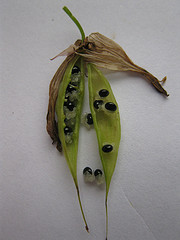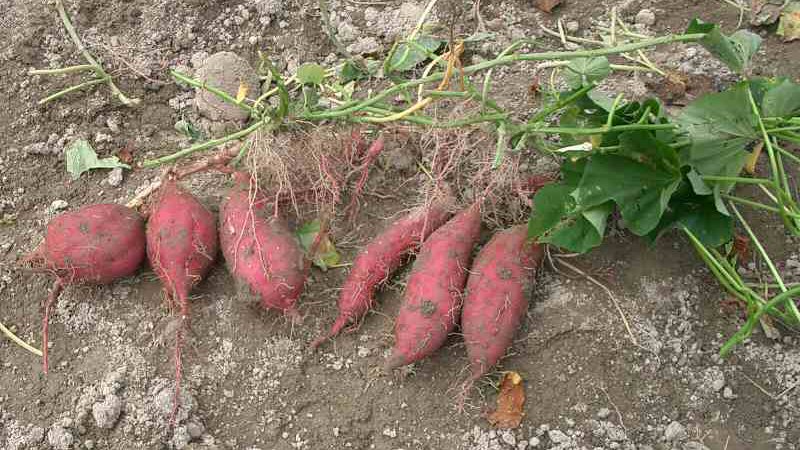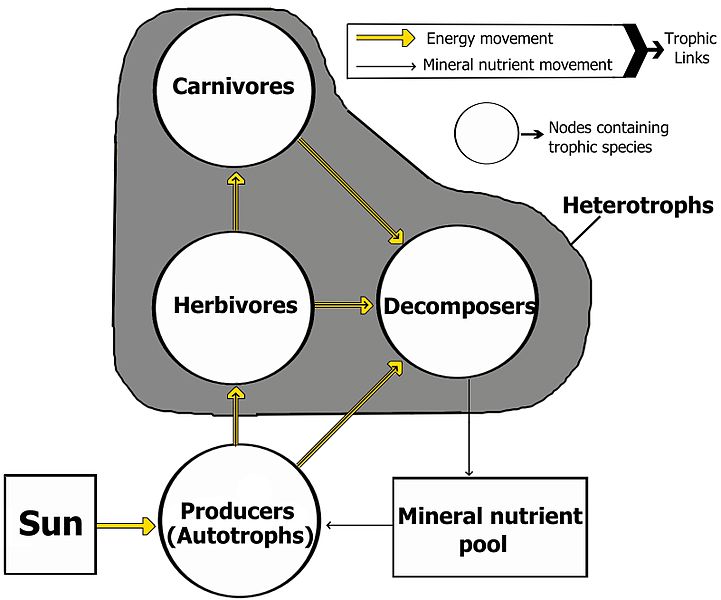Interactions
Dicentra formosa (Pacific Bleeding
Heart) is known to have mutualistic relationships
with multiple insects. The most known with ants as
mentioned in
Habitat of the Pacific Bleeding Heart. The ants
help the Pacific Bleeding Heart by carrying the
seeds of the Pacific Bleeding Heart over the
hills and burrows in order for more plan ts
to grow. The Pacific Bleeding Heart helps the ants
by providing food for the ants. The ants eat the
oily, white part of the seed. After the ants eat the
little white appendages, the ants leave the rest of
the seed on the ground. There, the seed will then
germinate (for more information click
here).
ts
to grow. The Pacific Bleeding Heart helps the ants
by providing food for the ants. The ants eat the
oily, white part of the seed. After the ants eat the
little white appendages, the ants leave the rest of
the seed on the ground. There, the seed will then
germinate (for more information click
here).
On the food web, the Pacific Bleeding Heart is toward the bottom of the chain. It is a primary producer; henceforth, it is eaten by grazers (herbivores) or any organism that eats plants (omnivores). However, the Pacific Bleeding Heart is toxic to organisms. Several alkaloids have been found in the tubers of the Pacific Bleeding Heart. Tubers are growths on the roots of plants that build up due to starch or other substances (potatoes are tubers). The most cases of Dicentra formosa poisoning occur in the spring time when heavy rain occurs. The heavy rain brings out the tubers of the plant and is most likely ingested by other organisms. Symptoms include increasing trembling, frothing at the mouth, vomiting, and difficultly breathing, but not death (unless too much is consumed). There is no treatment for Dicentra formosa poisoning; the only treatment is to not ingest the tubers of the plant.

 The
photo above shows tubers of a plant root. These
The
photo above shows tubers of a plant root. These
tubers are sweet potatoes. Although the tubers in
the
Pacific Bleeding Heart are not this big, you can
still see
what a tuber is.
Although, for humans, the roots of the Pacific Bleeding Heart
can actually be beneficial in medicine. The roots
can be a type of pain reliever, especially for
sprains and bruises. Also, the roots can calm
frazzled nerves in a human, particularly after a
traumatic experience.
Continue to
Interesting Facts of the Pacific Bleeding Heart
Return
Home